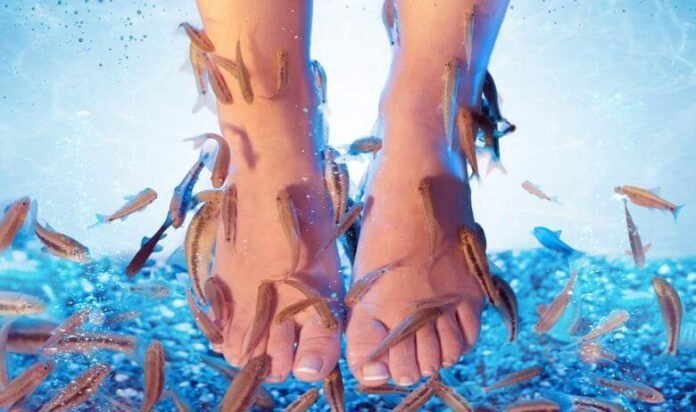This practice in which dozens of fish feed on the dead cells of the feet could spread HIV and hepatitis C.
Fish pedicure is not a novelty in the West. This treatment of Asian origin has been applied in shopping centers or beauty salons for more than 10 years. At first it was curiosity, later doubts came about a practice that accumulates lovers and detractors. It seems simple, put your feet in a container full of water while dozens of fish feed on the dead cells leaving only the new ones. But, are they all advantages in this type of treatment?
Fish-filled pedicures, also called fish therapy , became a trend in 2010. Since then, millions of people have already tried to put their feet under water and let the fish do the rest. It is actually a simple process that takes place in sessions of about 20 minutes. First, the feet are cleaned with water and neutral soap to remove the remains of creams or dirt that could harm the fish. Before the start of the process, a professional examines the feet of the person who is going to perform the treatment to make sure that there are no cuts or wounds. After this revision, the feet are introduced into the container with water where the fish are found.
But these fish are not just any fish. The fish used in this type of treatment is known as “doctor fish” or Garra Rufa . It is a small and elongated fish from Asia that can reach 15 cm in length. However, in this procedure only fish that do not reach 5 cm are used. Its function? Although they are herbivorous fish, in the absence of plankton, they can also eat pieces of human skin. Hence, once the feet have been inserted into the water basin, the fish themselves are responsible for removing the dead cells from the feet .
Fish pedicure: a practice questioned by health agencies
However, this practice has been widely questioned by health agencies, who confirm that this treatment could be very dangerous to health. Other diseases, pedicure with fish could spread HIV and hepatitis C . The British Health Protection Agency (HPA) ensures that people with diabetes, psoriasis or a weak immune system are particularly vulnerable and should not participate in this cosmetic practice.
The health agency warns that the risk of infection for the users of ichthyotherapy is low but not ruled out. The factors that could cause infections are due to the quality of the water in which this treatment is performed. According to the agency, the water in the tank where these fish live contains microorganisms that could cause bacteria problems . If a user is infected with a blood-borne virus (such as HIV or hepatitis ) there is a minimal risk that these diseases will pass from one client to another.
Numerous spas and beauty centers in Spain continue to carry out fish therapy. So far, if the correct hygiene procedures are followed, the risk of infection is very low . The best, as recommended by health agencies, is to change the water after each client. The problem is that it is not possible to sterilize the container continuously since there are about 200 fish inside .
But, there is not only in the pedicure with fish risks for the client. In addition to possible infections, this practice involves a moral ethical debate about fish and their care. Occasionally, some centers starve fish to make them more effective at eating patients’ dead cells. Due to its risks, this practice has already been banned in many places, such as more than 10 states in the United States .













